If your child starts to understand and want to use digital media when he or she is two or three years old, you should not leave him or her to do so alone. It is crucial that you experience how your child deals with it, what he already understands and what he likes. You decide what content it looks at and listens to. Find out in advance about suitable offers suitable for children.
In the early years, your child will experience many changes due to their physical and mental development, so regularity is important. Fixed rituals provide reliability and orientation for your child. This also applies to media sharing. Consider a set time slot on weekends and evenings before bed when you watch a video clip or listen to an audio drama together. Also take the time to talk about it with your child afterwards. The exchange is important so that it can process what it has seen or heard.
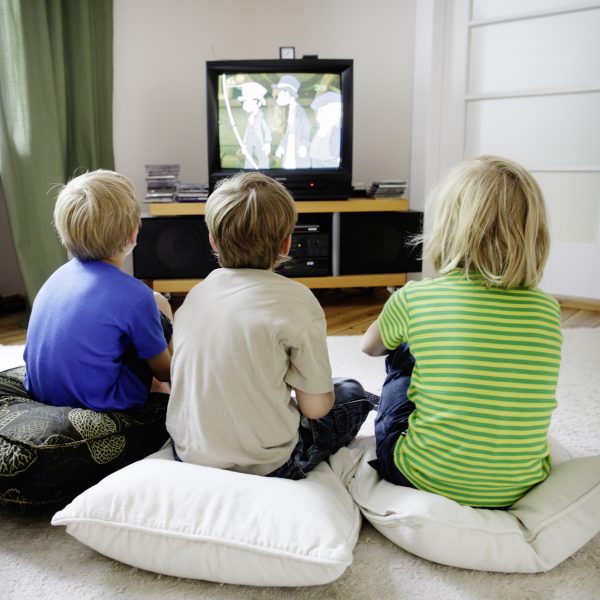
Children watching television | Copyright: Thomas Koehler/photothek.net
Who does not know this? Weekend, 6:00. The child is wide awake, but you are not. So it’s easy to just turn on the TV or tablet and have at least a few well-deserved minutes of peace and quiet – and why not? In everyday family life, there are simply moments when tablet or television are a convenient way to take a quick breath. And it’s so convenient that it’s very hard for us not to do it. As long as it doesn’t become a habit and we don’t misuse media to the detriment of the child, it’s perfectly permissible. However, you should then make sure that your child can only access age-appropriate and familiar media content and that he or she does not sit alone in front of the device for hours on end. Because especially in the early years, your child needs guidance when using media.
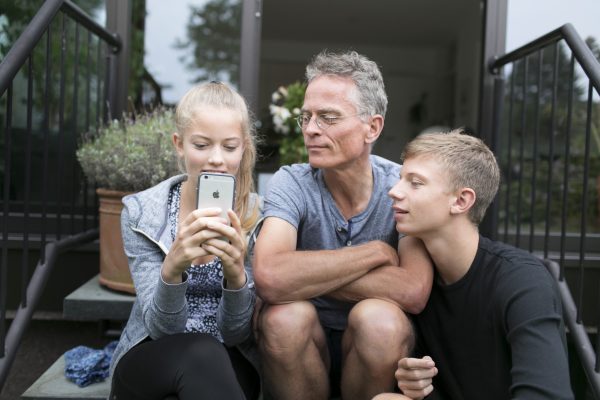
Copyright: Ute Grabowsky/photothek.net
Especially during puberty, you may sometimes find it difficult to understand your own children. Their interests change quickly and as parents you can hardly keep up. Still, it’s important to stay in conversation with your child, especially when it comes to media use. Show interest and try to understand what attracts your daughter or son to certain media (content). Let them show you things and avoid judgments! In a trusting atmosphere, your child will then also approach you if he or she ever encounters unpleasant media content.
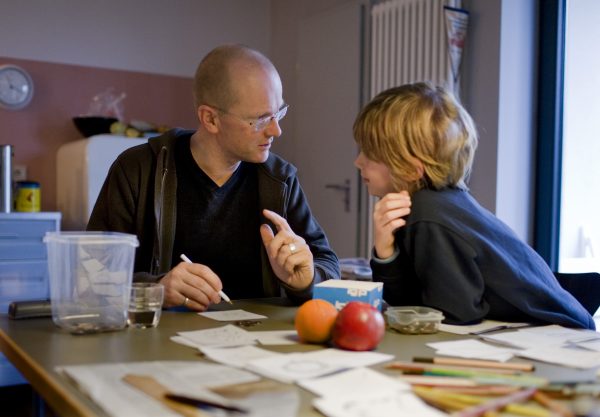
Copyright: photothek.de
Try to keep up to date with your child’s media worlds, stars and heroes, their favorite sites on the web, favorite computer games and apps. Talk with your child about his or her media preferences. Be your child’s first point of contact – not the Internet or television. Talk to your child about what they are experiencing in the media and help them understand and process it. Give your child peace of mind. In doing so, you also strengthen trust in each other. Conversations should be a high priority in the family. In a trusting atmosphere, your child will then also approach you if he or she ever encounters unpleasant media content.
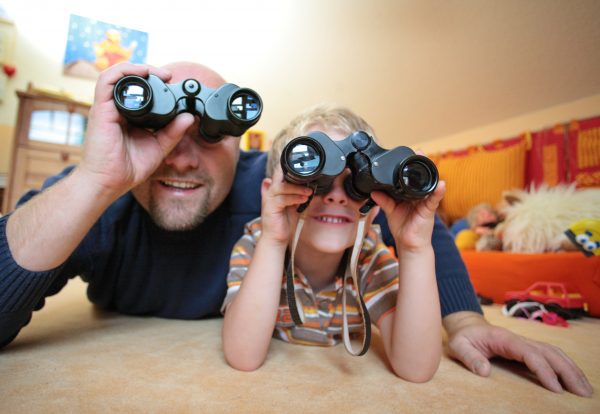
Copyright: U. Grabowsky/photothek.net
Media can inform and entertain. They are meant to bring joy, not fear. Whether it’s video, audio, images, text or games, media comes in many different forms. Children can learn to deal with media in a meaningful way through various offers. This is also possible with computer games. Responsible use of media is important in order to be more protected from dangers on the Internet. Your child can learn this only with your help.
It’s also up to you what media your child uses and how they use it. Help him to do so! Dare to try new media for you, too. If your child has a particular interest in an offering, the best thing you can do is explore and understand that offering with your child.
There is a suitable media offer for almost every concern. Our article ” How can I recognize a good children’s site?” will help you find media content suitable for children. Or take a look at which offerings have received the Educational Media Award in recent years.

Boy with laptop eating | Copyright: Ute Grabowsky/photothek.net
Continuous background noise and images are counterproductive, and not only for children. Pay attention to whether you or your child is really watching or listening and if not, just switch off. To find out if your child is still paying attention to the content, just ask what is happening there.
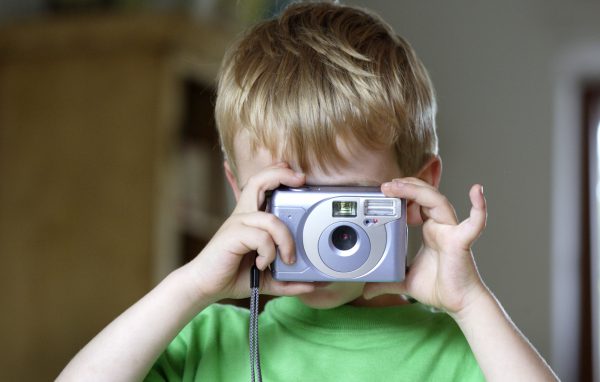
Copyright: photothek.de
Using media means more than writing news and watching movies. As a parent, you should show your child the many ways he or she can use media. Encourage your child to make their own media. Let it take its own pictures, make videos or create radio plays. Accompany your child in this process and create media content together. This also provides an opportunity to talk about the technology in question, its possibilities and risks. Also learn from your child yourself. Especially when it comes to digital media, our children are often more familiar with it and are much more open about it.
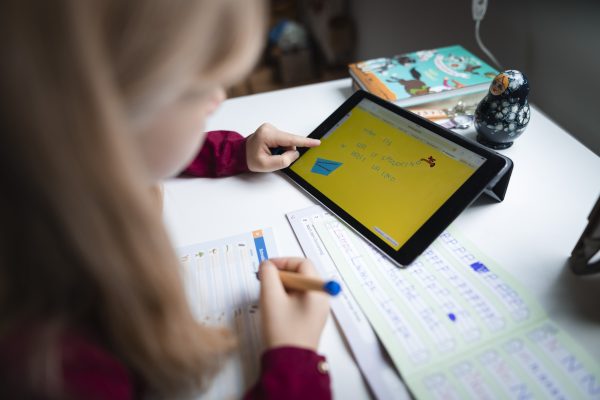
Copyright: photothek.net
Your child is not only looking for entertainment on the web, tablet and laptop are not just for passing time. Children and young people also use media specifically for learning and information – whether on behalf of the school or out of their own interest. If your child feels you don’t believe him when he learns with the tablet, it will lead to frustration. The fact that digital media are so fascinating opens up the opportunity to combine learning and fun. You should support this!
Especially in secondary school, it is becoming natural for children and young people to use digital media for school: They do research for lectures or create a presentation on a laptop. Your child may also be using an online tutoring service.
Your child learns that digital media are not just for entertainment and communication, and acquires important skills that he or she will probably need later in his or her career.
Of course, it’s best to explore the online worlds together with your child. But that won’t always be possible or practical.
Media use should take place in an appropriate environment. For example, if the family computer is in a fixed place like the study or living room, your child will be more responsible with it right away. It also allows you to keep an eye on what your child is doing online, and you’re approachable if they need help. However, it is important that your child does not feel controlled and overly confined. This also applies to the use of the smartphone. Talk to your child about what he or she does on the Internet on different devices. Set up a protected user account together. Child and youth protection programs or apps such as Google Family Link for children and teens can help. Also use separate settings on your router or smartphone.
The most important thing is to talk to your child about safety online. Talk about security risks and problematic content. If you find content problematic, you can report it.

Copyright: Thomas Trutschel/photothek.net
As parents, you should set rules for the media use of infants and babies. The very young need a lot of attention and care. Eye contact and a direct approach are important to develop a bond between you and your child. If you are constantly looking at your smartphone, you are distracted and your child notices. You should also discuss such rules with other close caregivers such as grandparents, siblings or the teachers at the daycare center so that they know what is important to you with regard to your child and its contact with media.
Children do not understand media until they are about one and a half years old. Very gradually, they understand what media are and what happens in them. They acquire media gradually by observing, exploring, trying out, and imitating. Access to digital media should not be encouraged or even forced. Slowly introduce your child to analog media such as children’s books, and then gradually expand the media assortment with offerings suitable for children.
For appropriate media use, it is good to plan alternative leisure activities. Playing with peers, doing sports, letting off steam outdoors are important activities for children and meet their need for exercise. Playing an instrument or singing in a choir can also be balancing and exciting.
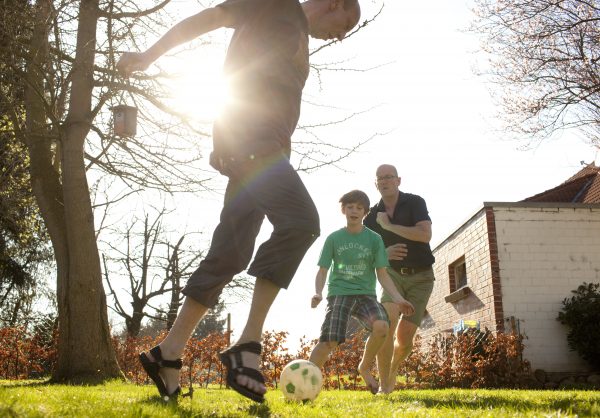
Copyright: Ute Grabowsky/photothek.net
Plan regular outings with the family. As a balance to media use, it is important to provide incentives for your children, even if they are older. A special weekend outing with the whole family is an attractive alternative to computer games! Media can be used more consciously through a mix of leisure activities.
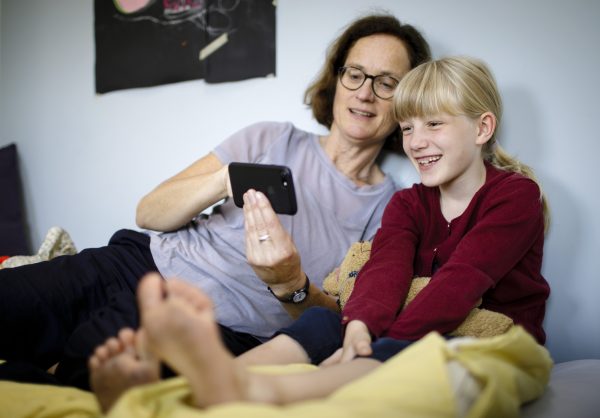
Copyright: Janine Schmitz/photothek.net
Use your child’s media together, showing interest in your child and his or her media use, techniques, and content. Surf the Internet together, play a computer game, or watch TV with your child. And explain to him now and then what is happening there. Have them explain what excites your daughter or son about the content. This way you spend time with your child and at the same time you get an impression of how he or she uses media and what effect they have.
As parents, you must be aware that the youngest children perceive media at a very early age, observe how they use them and imitate them. Your behavior in dealing with media therefore has an influence on how your child will use them later on.
Whether you check WhatsApp messages during joint activities, post photos on social networks or are entertained by the video clip in between: Pay attention to when you use media and whether you might be able to do without it at that moment. If you are distracted by the smartphone, your child will notice. Especially with babies, social bonding through direct address, eye contact and touch is of great importance for the parent-child relationship and the child’s development.
Watch how long and frequently you use media and put the smartphone aside or turn off the PC every now and then. Be a role model! Create media-free times for you and your child together. However, since media are part of our everyday lives, they should not be taboo as a matter of principle. Introduce your child slowly to age-appropriate media offerings and accompany him or her in his or her first media experiences.
The Internet is full of helpful and entertaining offers. However, apps that are connected to the Internet, video platforms and other online offerings also quickly provide access to content that harbors potential dangers. Age-inappropriate offerings can scare your child. Even the best child and youth protection measures cannot provide comprehensive protection. You can still help your child be as safe as possible.
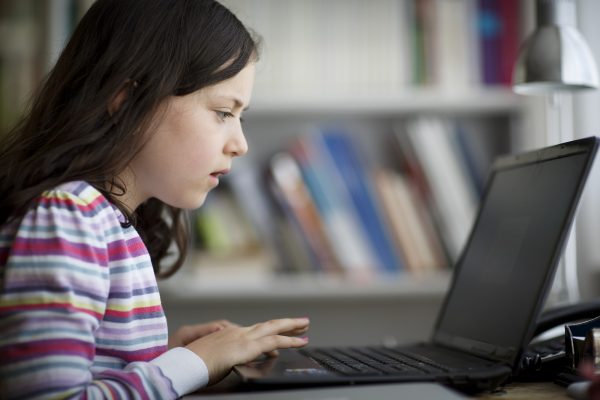
Copyright: photothek.de
As parents, be aware of the challenges your child may face when using media. This way, you can respond to your child in an emergency and offer assistance. You should not create unnecessary fear in your child in the process. Support the development of healthy skepticism, as well as a desire to use media!
Make sure your child can access age-appropriate content. Setting options on the device or in apps also help here. In addition, guidance in media use is indispensable, especially for young children.
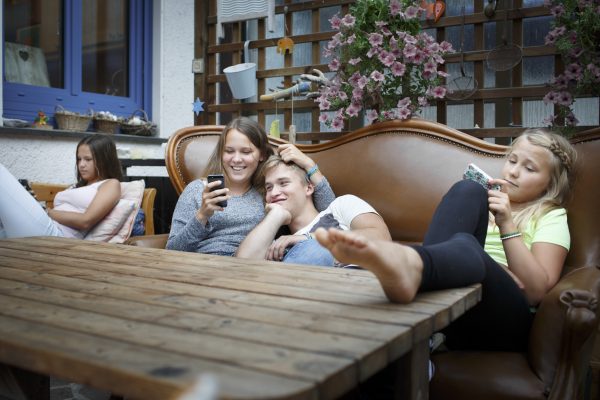
Copyright: Ute Grabowsky/photothek.net
Young people use digital media intensively and in many different ways. Social networks, messenger, YouTube and streaming services are particularly popular. Here they chat with friends, share pictures and videos, “like” and comment on posts, pose and be entertained. For young people, such platforms are a great playground for trying things out.
The adolescent phase includes setting oneself apart from the parental home, testing boundaries, and seeking and using personal freedom. Social media offers many opportunities for this. It is okay if you do not supervise your child everywhere. Children’s independence is positive and should be supported and critically accompanied by you. But this includes preparing them for this by making them aware of the risks and opportunities of digital media and showing them ways to deal with them.